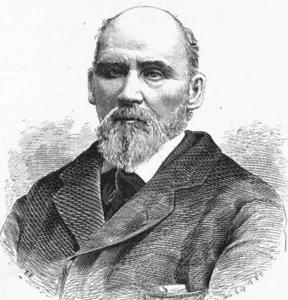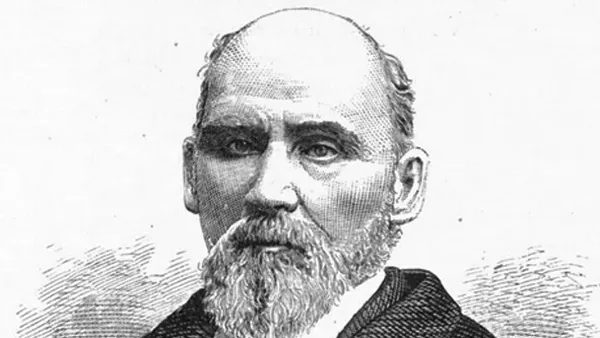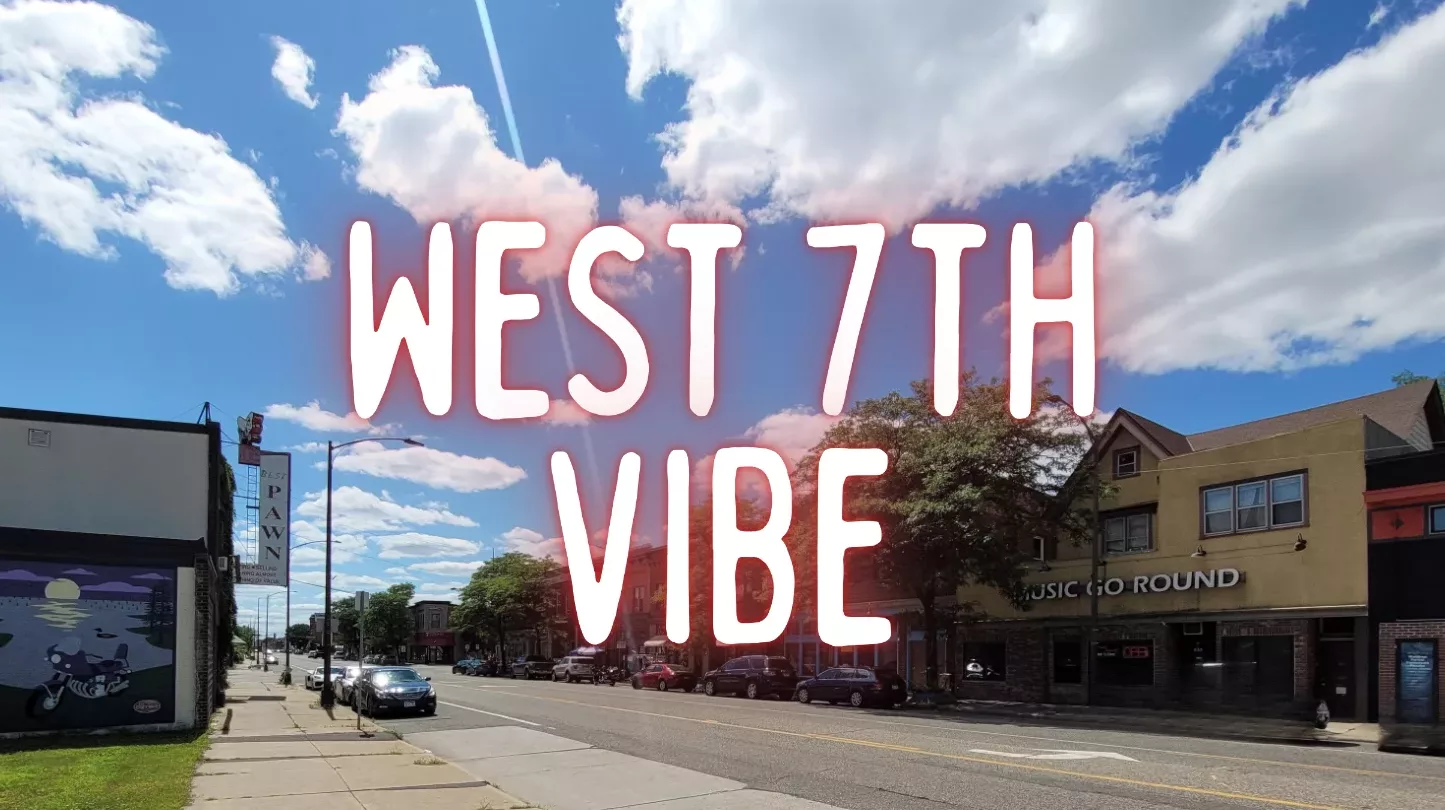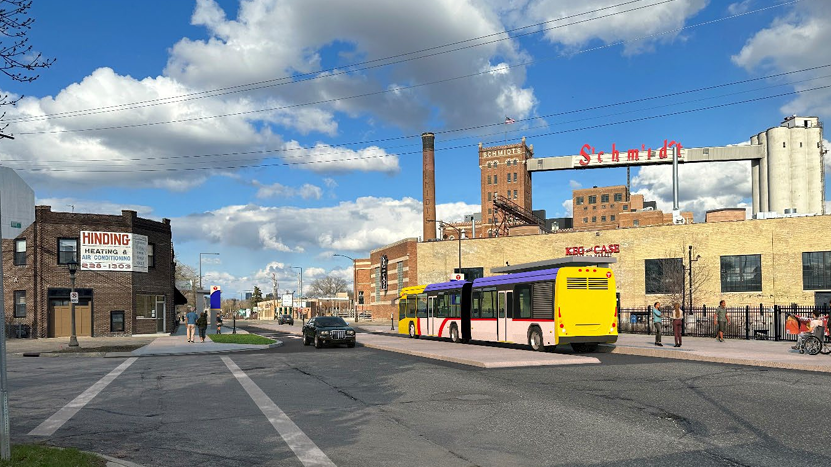While Irvine Park and Hillside commemorate John Irvine, his legendary civic role in the birth of our neighborhoods and city is somewhat neglected.
Prior to 1849 St. Paul was a frontier community with pioneer farmers and little development, much less markets. Settlers cleared the land and lived in log cabins until land titles cleared and permanent homes were built.

With a cohort of East Coast entrepreneurs and speculators, John Irvine (1813–1878) migrated west in 1837 from Pennsylvania; he arrived in Prairie du Chien in 1840 as a grocer. His friend Henry Jackson convinced him of commercial opportunities at the head of Mississippi River navigation. In 1843 Irvine trekked 200 miles in a sleigh with goods for sale and purchased 300 acres of the old Phelan claim for $300 from Joseph Rondo. The next year the steamer Otter towed his inventory on a large Mackinac boat from Prairie du Chien to the Upper Landing. It required great physical effort to drag his supplies through the brush and up the thickly wooded, roadless hill to his log cabin (around Third Street and Franklin Avenue). At the time of Irvine’s arrival, St. Paul had approximately 20 log cabins, five stores, one tavern and a Catholic chapel.
Within five years, Irvine cleared stands of elm, cedar and tamarack for a farm that he sold to steamers. He processed lumber in his sawmill and was used to construct his home, the first frame building in the settlement. The paths where Irvine “first dragged his supplies became Eagle and Chestnut Streets—the first business strips of West Seventh Street.” About 1845 he bought the Mortimer claim, and sold section 6, town 28, east half of northwest quarter to Henry Rice, the eventual area of Rice Park.
In 1849 Irvine donated a parcel of his land above the Upper Landing to the town to create a small park square. He switched from farming to real estate, setting a pattern other East Coast speculators would follow. He sold lots around the park square and transformed “Irvine Park into St. Paul’s earliest, most fashionable, residential district.” Located on an intermediary plateau above the Upper Landing, by 1857 the neighborhood had approximately 15 houses featuring the Federal, Greek Revival and Carpenter Gothic styles.
Over time the emerging Fort Road neighborhood was home to two Minnesota governors, one United States Senator, two Chief Supreme Court Justices of Minnesota, seven St. Paul mayors and numerous other politicians, as well as prominent businessmen.
Rural life however thrived in Irvine Park. Diarist Polly Caroline Bullard (1816-1898) in “Remembrance of Things Past” recounted how “Early on, most of Irvine Park’s houses faced the Mississippi River, and the neighborhood extended down the bluff, which was not very steep until the railroads were built. At the time, the park square was a grazing ground for cows. “Several families in the district kept cows in those days–so many that a boy came early in the morning to collect them and conduct them to a pasture below Oakland Ave…. Around 5 in the afternoon we would see the procession loping home again — each cow turning into her home gateway when she reached it”
Irvine died May 2, 1878 with services at Christ Church and burial in Oakland Cemetery. “Mr. Irvine has been one of our most active and useful citizens during his thirty-two years’ residence. The ample property, which his foresight and prudence prompted him to secure and hold, is now one of the finest portions of our city. The proceeds of most of it which has been sold, has been reinvested in erecting substantial business blocks, mills, warehouses and other buildings.”
George Irvine, John’s brother, joined him in 1851, hoed five acres of potatoes and with John, framed a saw mill and partnered in a store on Third Street. In 1857 they built a warehouse on the Upper Levee that moved to Exchange and Third Streets. George was trained as a tanner and opened the first leather store in the Rice House and a grocery business up to 1861. After stints as a policeman and running a boarding house George left St. Paul but returned in 1876 and worked in the Merchants Hotel until retirement. He died in 1892.
A tour of the Oakland Cemetery is like a wander through Minnesota’s history and prominent figures in the “Origin Story”. However John Irvine has a simple stone monument that differs from Horace Hills Irvine’s substantial mausoleum. Horace was a lumberman and lawyer; his family donated the current Governor’s mansion on Summit to the State of Minnesota. In 1965, Clotilde Irvine Moles and Olivia Irvine Dodge, the youngest Irvine daughters, donated the house and property to the State of Minnesota. Horace Hills Irvine died in 1947 and Mrs. Irvine remained at the Residence until her death in 1964.
More on John Irvine
Local Author Barbara McCormick has written a book on the historic district.
“Walking Tour booklet of the Irvine Park Historic District,” 2025 3rd edition, by Barbara McCormick, et al. First published in 1986. Available at Ramsey County Historical Society and Subtext Books. Fifth Street, downtown St. Paul
You can find a copy of “The Origin Story of Fort Road/West Seventh Street, the Township/City of Saint Paul, the Territory/State of Minnesota: Glacial Age Forward” at your local library, or order up a copy of your own at fortroadfed.org. Learn more about the book and find Joe’s upcoming conversations about the history of West 7th at josfland.com.








Leave a Reply